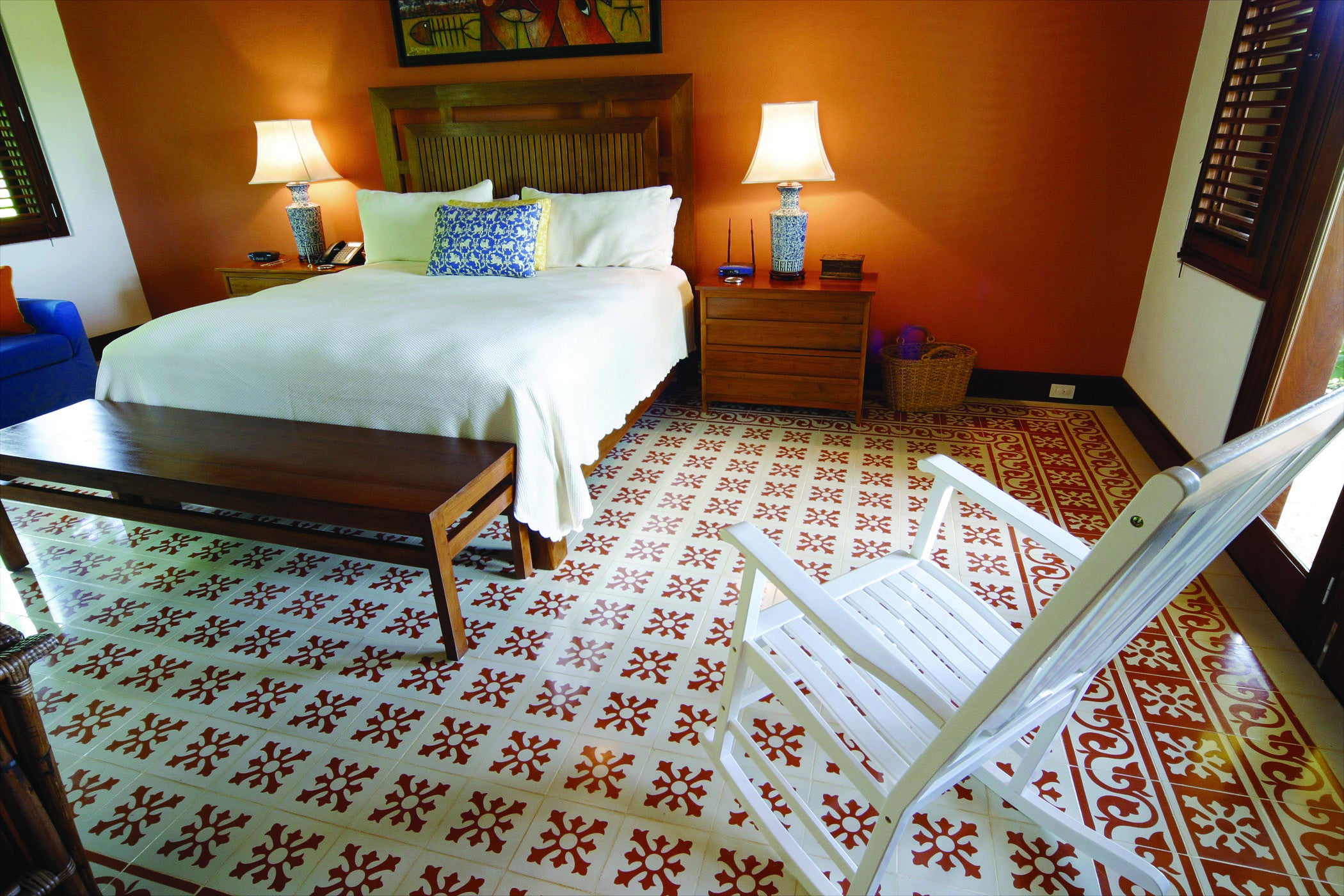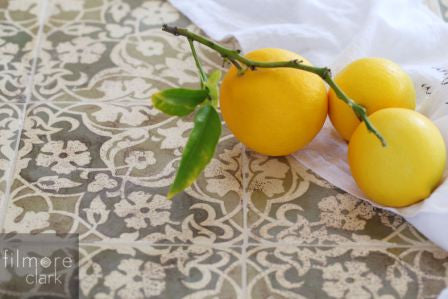Encaustic Cement Tile Explained
Posted by William Buyok on
There is a great deal of confusion and a bit of mystery about the difference between encaustic tiles, encaustic cement tiles, and concrete tiles. While it may seem like a trivial point or an exercise in semantics, it's important to know the difference between these two types of tiles, and where you can and should not use them. This journey starts with understanding the differences in how the tile are manufactured and ends with you being pleased with your purchase by finding the right look and tile for the job.
Encaustic and Cement Tiles Differ in How They are Made
It's easy to see why the names of encaustic and cement tile get confused. The difference in these types of tiles starts with how they are made. Moreover, the confusion is compounded because almost everyone uses the names interchangeably - even tile manufactures and tile vendors. Both encaustic tiles and cement tiles are unglazed. Additionally, the tiles look somewhat similar when they are installed. Now, let's start to understand the differences between encaustic tile and cement tile.
Encaustic tile is generally frost-proof and can be used in any outdoor applications. Hydraulically pressed cement tile can't be used in locations subject to hard freezes and is more commonly found only in Mediterranean or Tropical climates. You can now begin to see the importance of understanding the different tiles and how they will be used. However, some pre-cast concrete tile are frost-proof and excellent for outdoor applications in frosty environments.
How Encaustic Tile are Made
Encaustic tiles are made of two or more colors of clay which are inlaid together to create the pattern. The tiles are then fired. Encaustic tiles have been around since medieval times. However, encaustic tile as an art form reached its apex in the mid 1800s when renowned maker, Minton's Ltd, became the supplier of durable decorative finishes for walls and floors in churches, public buildings, grand palaces. Even the U.S. Capitol sports a Minton encaustic tile floor. To this day, England has the most prevalent encaustic tile installations because Minton tile is an English company.
How Encaustic Cement Tile are Made
Encaustic cement tiles are made of concrete and the color in the pattern comes from mineral pigments which are mixed and poured into a mold. This method was developed in the mid-19th century and hasn't changed much since then. The pattern is not painted and glazed like most decorative ceramic tiles, but is inlaid into the body of the tile using a mold. The term encaustic originally referred to the process of enameling, but around the 19th century, the term was used to describe inlaid tile work because of its resemblance to enamel work. This may explain why encaustic tiles, made with inlaid clay and fired to create a pattern, and encaustic cement tile, made with pigmented concrete inlaid using a mold, are sometimes both called encaustic tiles. To get a better idea of how encaustic cement tiles are made, watch this video, How Cement Tiles are Made.
Encaustic cement tiles, or cement tiles, are made by hand using a multi-step process. Three different layers make up each encaustic cement tile. The first layer creates the top, or patterned part of the tile. A patterned grid is placed at the bottom of a square mold and a color mixture of marble powder, white cement, and natural color pigments is poured into each section of the grid.
The middle layer of the tile consists of a mixture of Portland cement and fine sand, which forms a strong bond between the patterned layer and the base of the tile. The third, or base, layer of the encaustic tile is created using a mix of fine and regular cement, sand and limestone powder. Once the three layers have been poured, each encaustic cement tile is hydraulically pressed into a dense, heavy tile. It is then submerged in water for 24 hours and air-dried for 28 days to cure the cement and give it its strength. Once the tiles have completely dried, they are ready to be carefully packaged and shipped.
Encaustic cement tiles are considered a "green" flooring option because the tiles are not fired in a kiln and feature locally sourced products in the manufacturing process. The tiles are perfect for both indoor and outdoor spaces not subject to hard freezes. The tiles are durable and waterproof, and best of all, they are completely customizable.

Historical encaustic cement tile installation that Avente Tile helped restore in the Robert E. Lee Building, Jackson, MS.
To be even more accurate, cement tiles should be called concrete tiles because cement is one of the materials used to make concrete. The name cement tile does distinguish them from ceramic tiles. You can see why cement tiles are frequently called encaustic cement tiles and how they differ from encaustic tiles.
There are two other posts that can help explain the Difference between Encaustic and Cement tile by Zoe Voigt on Tile Style and Cuban tile isn't encaustic, it's cement. It's not really cement either, it's concrete. by Paul Anater on Kitchen and Residential Design.
Avente Tile does not sell encaustic tile. There are but a handful of artisan manufacturers that make true encaustic tiles. It's a beautiful, durable tile that isn't commercially produced. If you're looking for encaustic tiles, then visit Filmore Clark.

Encaustic cement tile flooring can be customized and is very durable
You should now understand the difference between encaustic tile, cement tile, encaustic cement tile, and concrete tile. Generally speaking, encaustic tile refers to kiln-fired clay tile. All of the other terms that include cement or concrete refer to tiles made with concrete that are usually hydraulically pressed. If you aren't sure what type of tile the manufacturer, vendor or sales person is referring to, make sure to ask. You probably know more than they do! It is important to make sure you know what tile you want and what will work best for your installation. For more information about our encaustic cement tiles, visit our cement tile information center.
Share this post
- Tags: Cement Tile Designs, Concrete Tile, Custom Cement Tiles, Encaustic Cement Tile, Encaustic Tile, Tile Design


